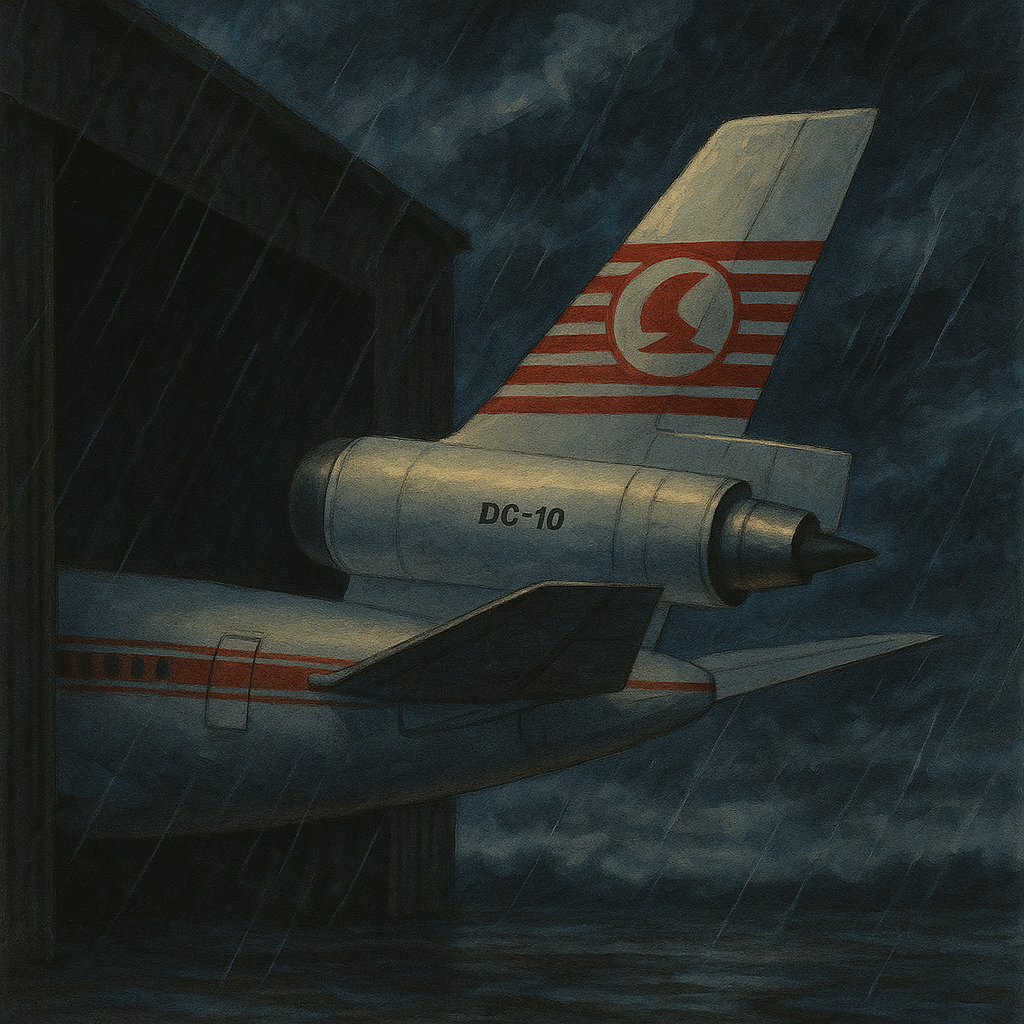My Story "THY DC-10" at London Gatwick 1974
Posted by Malcolm on 27th Aug 2025
| 1971 | American Airlines | Launch customer, DC-10-10 on U.S. domestic routes. |
| 1971 | United Airlines | Co-launch customer, DC-10-10. |
| 1972 | Continental Airlines | Early U.S. operator, DC-10-10. |
| 1972 | National Airlines | Used DC-10-10s incl. Miami–London flights. |
| 1972 | Northwest Orient Airlines | Launched DC-10-40 (Pratt & Whitney powered). |
| 1972 | KLM Royal Dutch Airlines | First European DC-10 operator. |
| 1972 | Swissair | Early European intercontinental operator (DC-10-30). |
| 1972 | Japan Air Lines (JAL) | DC-10-40 introduced on Pacific routes. |
| 1973 | Lufthansa | Introduced DC-10-30s. |
| 1973 | Air France | Brought DC-10-30 into long-haul service. |
| 1973 | SAS Scandinavian Airlines | DC-10-30 on Europe–U.S. routes. |
| 1973 | Sabena (Belgium) | Operated DC-10-30s. |
| 1973 | Varig (Brazil) | Early South American operator. |
| 1974 | Turkish Airlines | DC-10-10 fleet, including aircraft involved in 1974 Paris accident. |
| 1974 | Alitalia (Italy) | DC-10-30 long-haul. |
| 1974 | Laker Airways (UK) | Famous for Skytrain DC-10 services. |
| 1975 | Finnair | DC-10-30 entered service. |
| 1975 | Air New Zealand | DC-10-30s for long-haul Pacific flights. |
| 1975 | Wardair (Canada) | Charter and leisure operations. |
| 1975 | Western Airlines (U.S.) | DC-10-10s for domestic trunk routes. |
| 1970s (mid) | Delta Air Lines | Took DC-10-10s before switching to L-1011 preference. |
Just after this time, my plane spotting friend Christopher Plunkett and I were heading home from a day of spotting. We had finished with the light aircraft, where the South satellite is today. As it was March, the evening was darkening. We rode home on our bicycles along the East Perimeter Road and saw a DC-10. At first, we didn't think much of it, as it was partly inside a hangar with just the tail visible. Laker's DC-10s had arrived in late 1972. But it was not in the Laker section of the airport. Wet brakes squeaked on our bikes in the light rain. We realised it was a THY DC-10, the sister of the one that crashed days earlier. We couldn't see all of it—does that count as a spot? Sometimes you think you've seen it all at Gatwick, and then a surprise appears. Without the internet or Flight Radar24, we couldn't know when it would leave. We had school, so visiting Gatwick by bike took time and effort. Plus, it would be dark, and there was homework and dinner to attend to. In short, it flew out, and we missed it. It didn't even make the local paper. We believe it was a quiet inspection, as I think all DC-10s were inspected but never fully grounded. The only time the DC-10 fleet was grounded worldwide was in June 1979, after the American Airlines Flight 191 crash in Chicago, when the FAA suspended operations for over a month to investigate engine and pylon issues.


 British Pounds
British Pounds
 US Dollars
US Dollars
 Australian Dollar
Australian Dollar
 Canadian Dollar
Canadian Dollar
 Singapore Dollar
Singapore Dollar
 Switzerland Franc
Switzerland Franc
 Denmark Krona
Denmark Krona
 Hong Kong Dollar
Hong Kong Dollar
 Japan Yen
Japan Yen
 Sweden Krona
Sweden Krona
 Polish Zloty
Polish Zloty

